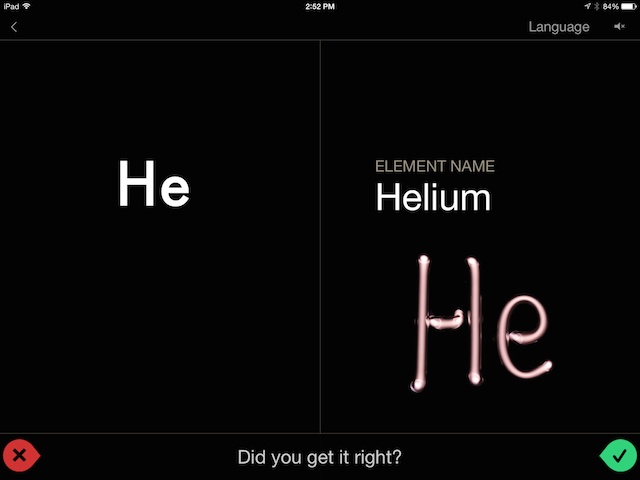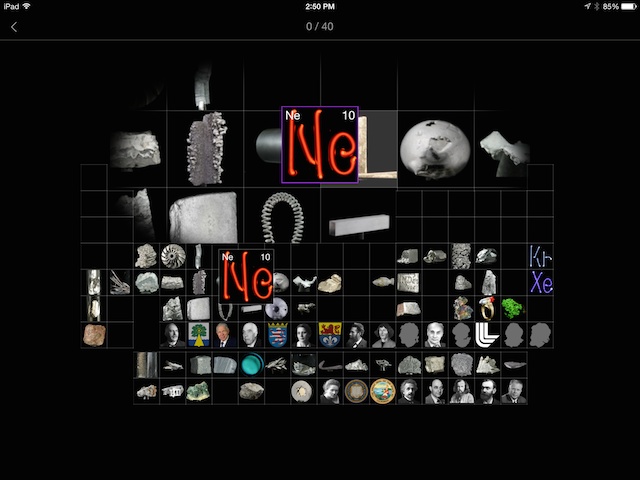The Elements: Flashcards - Quizes and Tables for Chemical Symbols on iOS Devices

AMITIAE - Sunday 18 May 2014
|
The Elements: Flashcards - Quizes and Tables for Chemical Symbols on iOS Devices |
 |
|
|
By Graham K. Rogers
While it is aimed at students revising for exams, it could be used as a useful tool for anyone who needs to refresh their knowledge. Having run it a couple of times on the iPhone and iPad, I also see ways in which it could be used for classroom activities.
On the iPhone, the app only worked in portrait mode, but on the larger screen area of the iPad the display also used landscape mode. With Name, a chemical symbol appears. There is no option to type in the answer, so this is a verbal or mental exercise. The latter requires some personal honesty, but as no scores are kept, this hardly matters. Tapping on "Element Name" reveals the correct name, an image and two icon options: wrong or right. Tapping one of these takes the user to the next problem.

At the top of the panel is a speaker icon and the word, Language. Pressing the speaker caused the app to pronounce the element when it appeared. There were some 18 languages listed (plus Automatic) and selecting one, changed the app display language and the pronunciation. I did change the iPhone language to Thai but that had no effect on display or speaker in the app. My thanks to True staff in Pinklao for helping me change back to English.

Hydrogen was easy with its Atomic number of 1 (I had remembered that), but others less so. As the thumbnail was dragged to the Table, so the main part of the panel was enlarged, making it easier to drop the icon into its correct place. If the user was right, a green check appeared; if wrong, a black cross in a red circle.
As a standalone app this has much value simply as a revision tool, but it would be quite easy to create other tasks, such as classroom exercises, that increase the education value of this app. Because of the interest it might create for those using it, the useful link to The Elements is less a form of advertising and more a public service announcement.
Graham K. Rogers teaches at the Faculty of Engineering, Mahidol University in Thailand where he is also Assistant Dean. He wrote in the Bangkok Post, Database supplement on IT subjects. For the last seven years of Database he wrote a column on Apple and Macs. He is now continuing that in the Bangkok Post supplement, Life. |
|

For further information, e-mail to

|

|